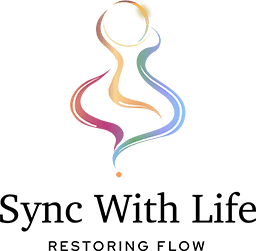I developed processes for ancestral healing because I noticed a persistent pattern within myself—despite years of deep healing with the best guides and techniques, certain issues kept repeating. It felt as if some influences were beyond my conscious awareness, like subtle threads woven into my life that didn’t quite align with who I felt I truly was at my core.
This realization led me on a deeply personal journey into the wisdom of my ancestors. One of the primary influences I discovered was the small, almost unnoticed voice in my head—what we often call our conscience, our guidance, our subtle thoughts, or perhaps our subconscious. I realized that these inner voices and subtle nudges were often shaped by patterns passed down through the generations, and they were influencing me without my conscious awareness.
The more I dug into this, the more I discovered that ancestral patterns were not just about genetic inheritance but about spiritual, emotional, and energetic imprints passed down through family lines. I wasn’t just dealing with my own unresolved issues; I was unknowingly carrying the emotional baggage of my ancestors. It was in those moments of self-reflection and exploration that I decided to dive into ancestral wisdom—not only from my own background but from many diverse cultures.
I found wisdom and healing tools in traditions like Native American practices, African healing techniques, Asian philosophies, Indigenous Central American traditions, and Levantine practices. But, in order to truly access this knowledge, I had to break free from the confines of my foundational upbringing in Christianity. This wasn’t easy. It stirred deep-seated fears, anxieties, and uncertainties in me. However, this fear was a key part of the transformation process. It pushed me to expand my understanding of myself and my world, and through this, I created more space for me to be truly whole.
I come from a richly diverse ancestry, with roots that stretch across the world. My heritage includes white, African, Asian, Indigenous Central American, Levantine, and more. As I explored each of these traditions, I noticed something fascinating. The ancestral line that had the smallest biological influence on my DNA seemed to have the loudest voice. It was as if they were saying, “Heal this before we die out.” This realization was profound. It felt as though these voices—sometimes whispers, sometimes shouts—had a purpose: to heal and be heard.
This led me to develop a process for healing these ancestral wounds. I realized that we often think of epigenetics—the marks and imprints passed down through our genetic makeup—only as a biological mechanism. But these imprints are more than just biological—they’re also emotional, spiritual, and energetic. Some of the things we carry, the fears, the doubts, the unresolved trauma, are directly linked to ancestral experiences. And yet, we often want to deny or avoid these influences. We’re quick to dismiss the notion that our ancestors’ pain could have any impact on us today. But I believe that it’s time to shift our understanding and recognize that these inherited patterns are real and deserve attention.
Through this journey, I came to believe that some ancestors are well, some are hurting, and some are ready to confess their transgressions. If we don’t create space for these ancestors to express themselves—if we don’t give them the compassionate witnessing, nonjudgment, accountability, and acknowledgment they need, then we continue to carry their unresolved trauma within our own bodies. We become part of the problem.
The impact of not acknowledging and healing these ancestral influences is subtle yet profound. It shows up in small, seemingly insignificant ways that accumulate over time. Those little moments of inherited pain and unresolved emotions build up and affect us in ways we may not even recognize—until they manifest as recurring life patterns, unhealthy relationships, or emotional struggles.
Transmuting these inherited patterns began to transform my life profoundly. Slowly, the patterns started to shift. Some changes were gradual, but others were swift and dramatic. Healing these ancestral wounds opened new pathways for me. It was like lifting a fog that had clouded my vision for so long. I believe that this process of healing the past, of listening to the voices of our ancestors, can transform us all.
Like us, our ancestors experienced trauma, joy, pain, and growth. But when we ignore their stories or deny their wounds, we miss out on the opportunity to heal and evolve. Healing our ancestral wounds isn’t just about us—it’s about giving space for the entire family lineage to heal and grow, allowing us to break free from old cycles that no longer serve us.
Through this process, I’ve learned that the key to true transformation lies in embracing the fullness of who we are—rooted not only in our current selves but also in the wisdom and healing of our ancestors. As we heal, we create more room to be whole, to be grounded, and to navigate life’s challenges with more clarity and purpose.
The science to support my theory that ancestral healing through emotionally based embodiment practices reverses epigenetics into a font of wisdom is close to being validated. I think Sync With Life processes, practices, and other similar practices can ‘pop’ those dents out of Sacred Armor, repairing the epigenetic marks and restoring the armor to be better than new. Sync With Life practices for restoring flow and relating.
